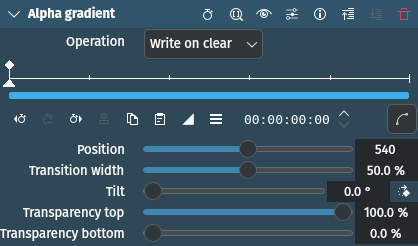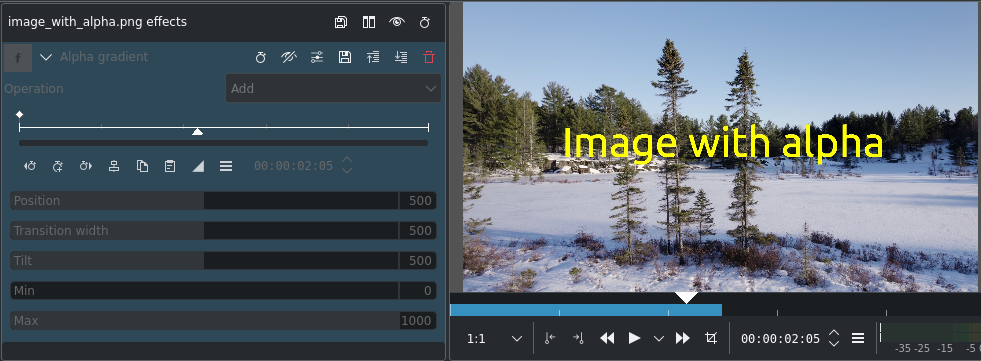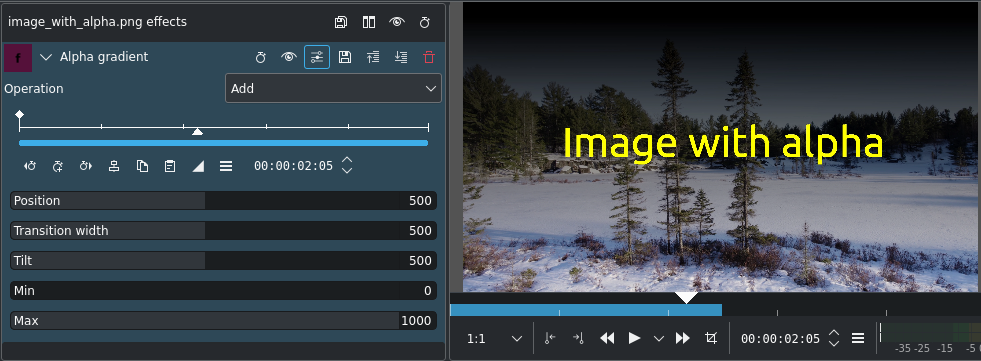Alpha Gradient¶

Description
Fill the alpha channel with a specified gradient (frei0r.alphagrad)[1]. Its purpose is to enable, together with alpha controlled color manipulation, the use of graduated neutral-density filters similar to what one uses in photography[2].
Parameters
Parameter |
Value |
Description |
|---|---|---|
Operation |
Selection |
Defines the compositing operation (see list below) |
Position |
Integer |
Position where the gradient starts (default is half the project vertical resolution) |
Transition width |
Percentage |
Width of the gradient (default is 505) |
Tilt |
Degrees |
Rotation of the gradient in degrees (range is 0-360, default is 0) |
Transparency top |
Percentage |
Sets the transparency at the top / start of the gradient (default is 100% for full transparency) |
Transparency bottom |
Percentage |
Sets the transparency at the bottom / end of the gradient (default is 0% for no transparency) |
The following selection items are available:
Operation
Write on clear |
Overlay the image (default) |
Add |
Add the existing pixel and the calculated gradient values |
Min |
Take the minimum of existing pixel and calculated gradient values |
Max |
Take the maximum of existing pixel and calculated gradient values |
Subtract |
Subtract from the existing pixel the calculated gradient value |
Notes
In the example below a .png image has been overlayed to a video clip and the Alpha Gradient effect applied with its default values. You can see how the gradient darkens the video. Note the Operation Add to make the text opaque.

Alpha Gradient effect - before¶

Alpha Gradient effect - after¶